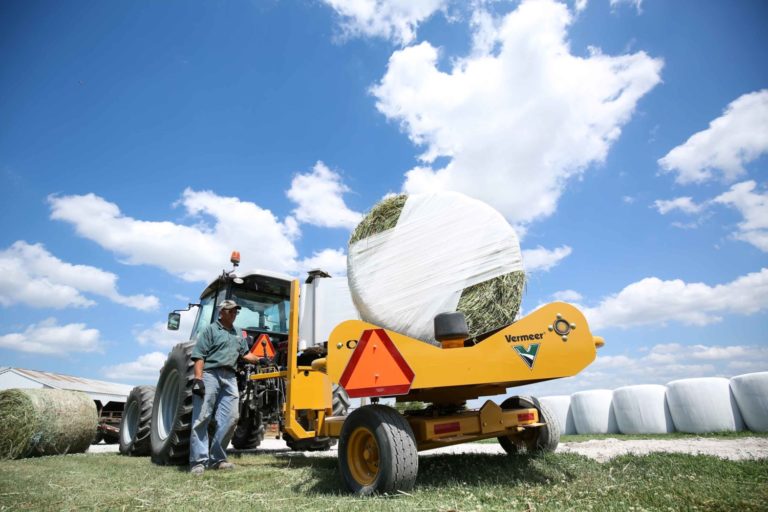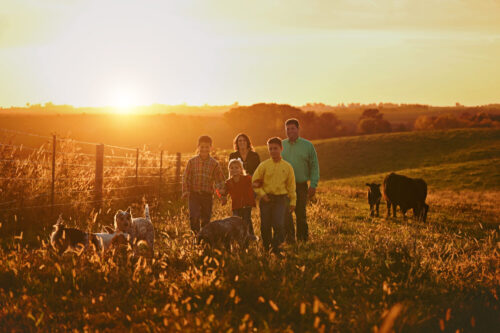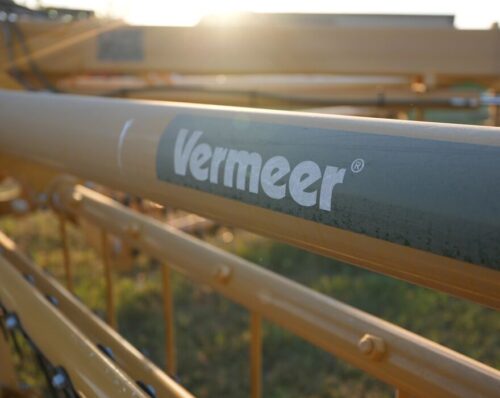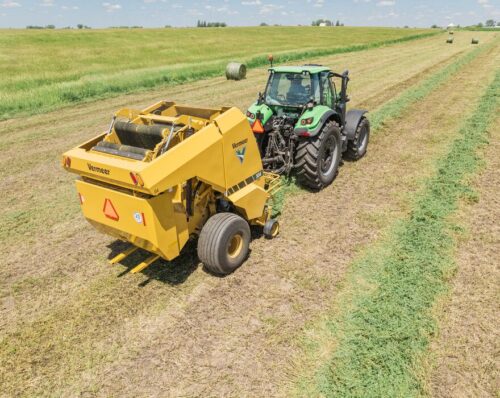
Baleage – Not Just for Dairies
February 2018
The old saying, “If it works the way it is, why change it,” might not be making life any easier for farmers. After all, if you could change the way you put up hay to reduce the number of days in the field, why wouldn’t you?
Baleage (think bale + silage) is making it easier for producers to put up hay and not have to worry about weather conditions. What’s more, baleage has the potential to produce a higher-quality product.
For some, “baleage” is a relatively new buzzword – but reality is: The practice has been around for several years. Originating in Europe, baleage has been in the U.S. for a while, particularly in the wetter regions where it has become more and more difficult – if not impossible – to consistently make dry hay.
What regions produce baleage?
Producers in the northeastern part of the U.S. have started to readily adopt the practice, but what about those in the Midwest, South and West? Well, if you talk to most producers in those regions, you will likely hear a “Huh? We don’t make wet hay around here.” Or even, “We will never put up silage in this part of the country.”
Matt Walker of Waco, Texas would have said the same a few short years ago. Now, he will tell you a different story.
“I have a full-time job; I work 60 hours a week, and it’s really hard for me, if the weather doesn’t cooperate, to find a time to go cut hay, let it dry, rake it and bale it,” says Walker.
Walker manages his family’s Waco agriculture dealership but also has a custom haying business and several cows to feed a year. This is the first year Walker has started putting up baleage, and he says it has had a huge impact.
Walker reflects about the early adopters of baleage in the area, and most of them were dairy producers. “The dairy producers in our area grow high-production cattle in a small area. I just figured we didn’t have to go quite to that extreme, but I figured it would work pretty well for our operation,” Walker says.
“When making dry hay, it usually took me four to five days to let it dry, and it was always inevitable it was going to get rained on, so we just wanted to grow a higher-quality crop in a smaller area.”
In the past, Walker has put up approximately 1,500 bales of dry hay a year. This year, he hopes to make 2,000 bales, all of which will be baleage. With his custom haying operation, Walker has been able to share the trend with others in his area. In fact, it went from no one in his area doing baleage to now more than he can count.
Factors driving the trend
The high-moisture forage can offer many benefits for producers, such as convenience, palatability and increased nutrient quality as well as reduced storage losses after bales are wrapped. But for Walker, quality was the biggest benefit.
“When we fed baleage for the first time, the cattle just stayed stuck to the bale and ate it until it was gone. They prefer it over dry hay,” Walker says. “Other than there being footprints and a hay ring sitting there, you couldn’t tell there had been a hay bale sitting there. They licked the ground clean.”
Sacrificing quality wasn’t an option for Walker. He says good cows will tell you when they are happy because they are content. After just his first year of making baleage, he believes herd health will be one thing positively impacted.
Walker says, “I think we’re going to have fewer digestion issues and a lot fewer eye issues because they’re not getting all the dry hay matter in their eyes.”
Not only is Walker getting his hay put up faster, but baleage has also allowed him to juggle work and raising cattle a little easier. Even in an unlikely place due to its climate, high-moisture hay was the answer for him in central Texas.
Baleage investment
When it comes to the baler you choose to use, Walker stresses the importance of a pre-cutting system. The ability to finely chop the hay before being baled helps pack a dense bale. In order for Walker to have enough hay to feed his cows, he would often chase dry hay around the country, costing him time and money.
Since cattle eat pounds, not bales, packing a dense bale helped put more hay into fewer packages – ultimately helping to save transportation costs, storage space, netwrap/plastic costs and time feeding out the bales.
Just as important, a pre-cutting system can help pay dividends during feed out.
A study by Penn State University revealed when an animal eats forage cut at a 4-inch length, compared to uncut forage, producers see close to a 10 percent increase in efficiency. There are two reasons for this. First, when cattle are eating from a bunk or bale ring, they waste less forage when cut into 4-inch pieces.
If the forage is not cut, the animal may take a bite, step back while chewing and lose the extra hay on either side of its mouth. According to Dan Undersander (University of Wisconsin), the second reason is: When an animal takes bites of small pieces, they spend less time chewing. Spending less time chewing allows the animal to consume more and have improved performance.
The initial investment of adding a bale wrapper to an operator’s hay tools can be challenging to face for a producer, but the benefit of reducing hay loss in storage and feeding time can quickly outweigh any cost. The idea behind tightly wrapping a high-moisture bale is to reduce spoilage and mold build-up and to increase feedable tonnage.
Baleage is making it easier for producers to put up hay and not have to worry about weather conditions while producing a higher-quality product.
A few years ago, nobody would have thought a cattle rancher in Texas would be making baleage. Today, Walker says he wishes he would have started years ago.
Originally posted online by Progressive Forage






